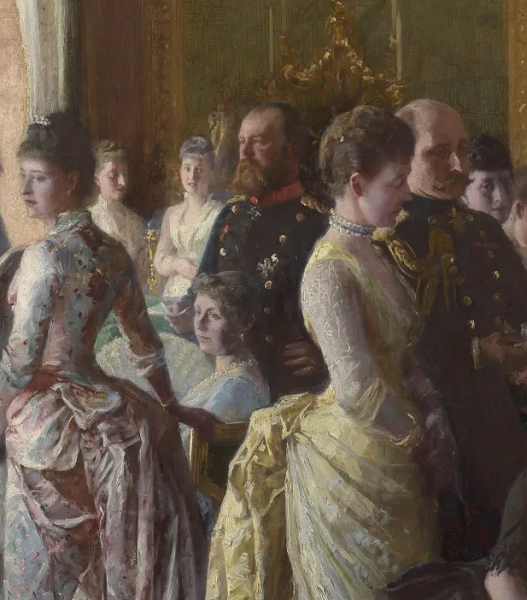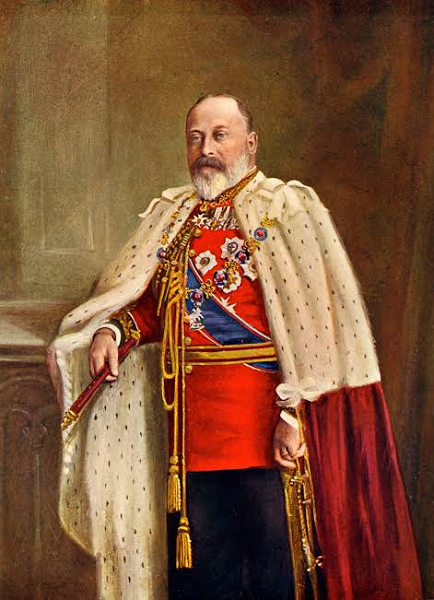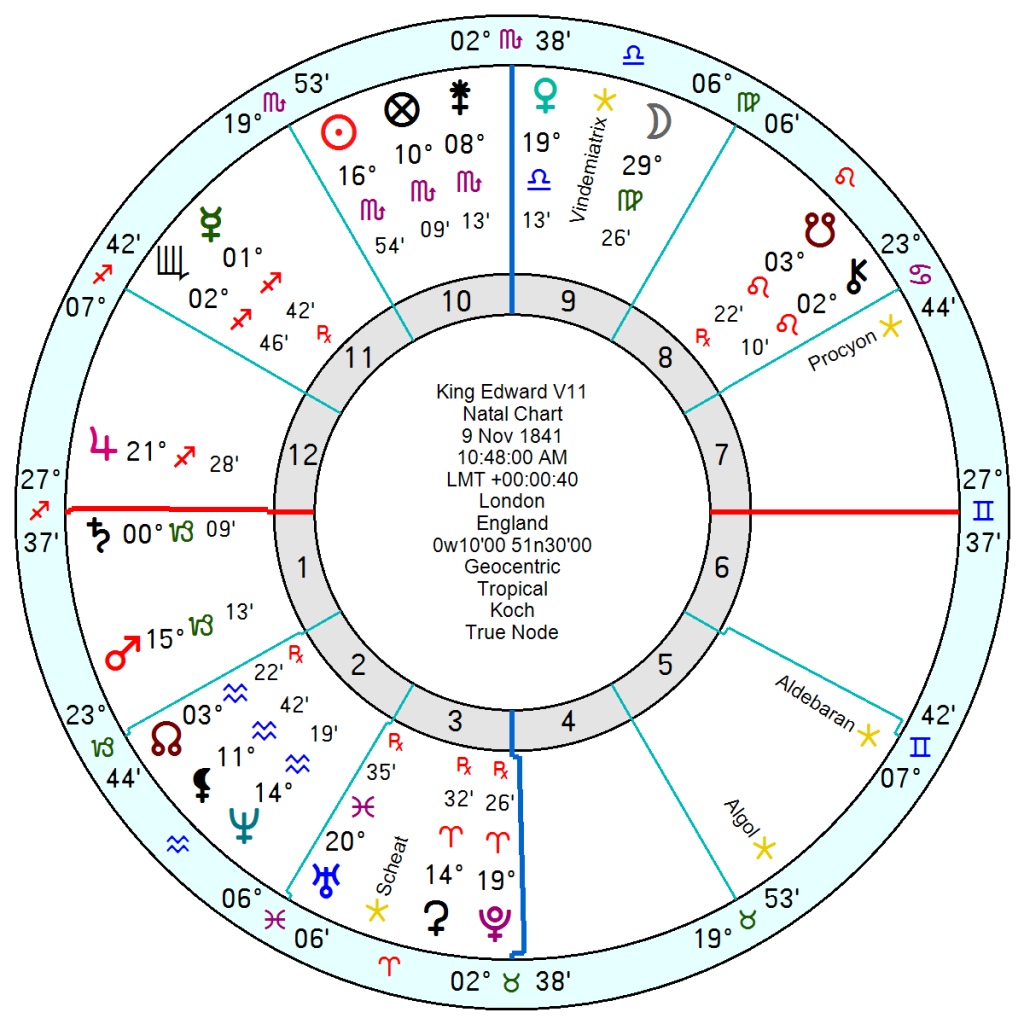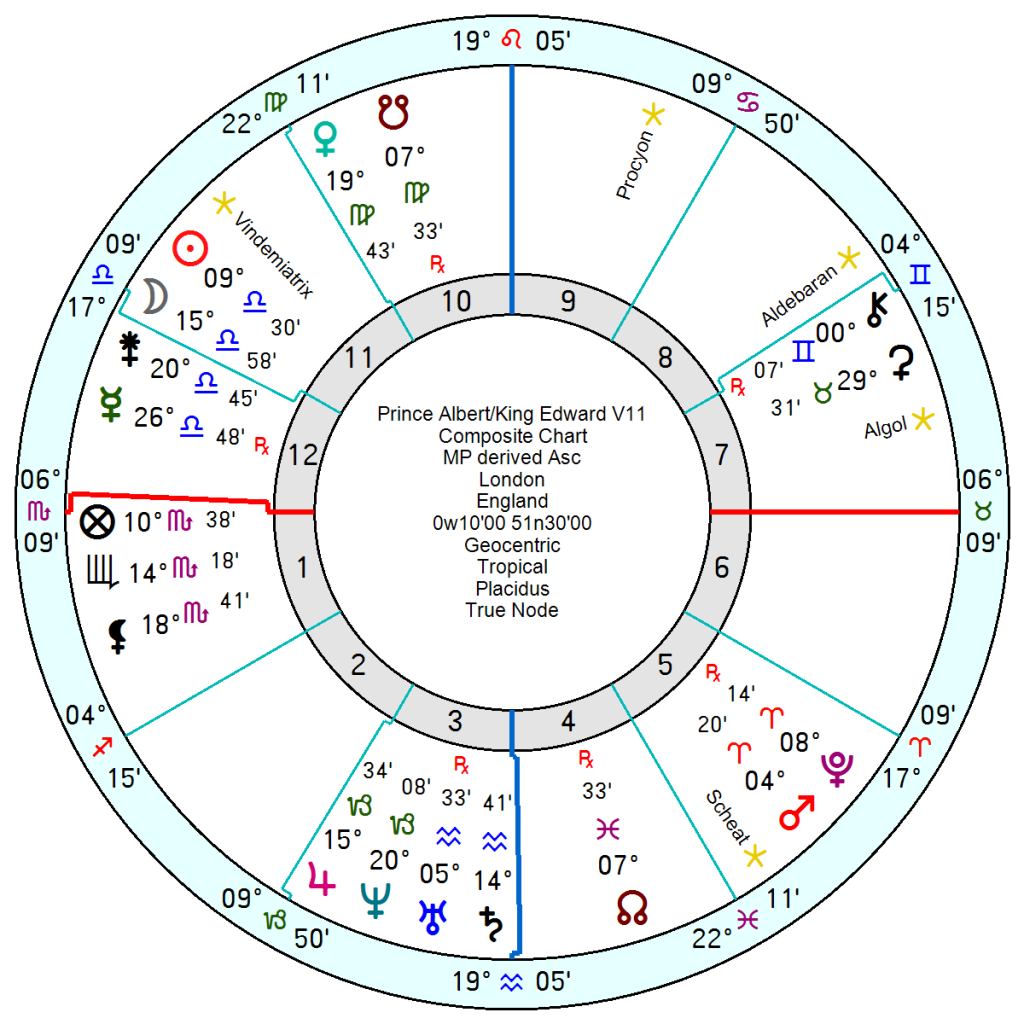







Britain’s age of excess started as stuffy Queen Victoria died in 1901 and her pleasure-loving son, ‘Dirty Bertie’, King Edward V11 took over as monarch for nine years along with his style-icon Queen Alexandra.
An exhibition devoted to The Edwardians: Age of Elegance will be on display in Buckingham Palace, showing paintings, sculpture, jewellery, furniture, books, photographs and ceramics.
Born 9 November 1841 10.48am London, playboy Edward was not known for his restraint, having Elgar’s Pomp and Circumstance, Land of Hope and Glory played at his coronation, and pronouncing cigars were back in fashion after the tobacco intolerance of his mother’s reign. He had a Fabergé-designed cigarette case decorated with a diamond-encrusted snake given to him by a favourite mistress, one of the dozens of women he notoriously indulged himself with. He had glamorous royal mistresses such as Lily Langtry and Alice Keppel (the ancestor of Queen Camilla) though none as sophisticated as his spouse the Danish Alexandra who presented him with six children. She was hailed by Vogue as “the legitimate head of fashion throughout the British dominions with high collars and jewelled choker necklaces that she wore to disguise a scar on her neck.
He had a 10th house Scorpio Sun trine an independent-minded Uranus in a volatile sextile to Mars in Capricorn. He also had an emphasised Jupiter in Sagittarius in his 12th square a Virgo Moon opposition Uranus hinting at his love of indulgence with no limits, His Venus in Libra was in an intense and seductive opposition to Pluto square Mars – nothing would hold him back from satiating himself in the delights of seduction, even when he grew obese in later years.
Surprisingly he had a defensive Saturn on his Ascendant – though from all accounts he was hardly reticent when heading for enjoyment – perhaps Saturn in its goatish guise.
Alexandra, born 1 December 1844 6.30pm Copenhagen, Denmark, was a fun-loving Sun Sagittarius in her 5th house (also house of children) with successful Jupiter conjunct her Midheaven on the focal point of a yod inconjunct a Leo Moon sextile Mars in Libra in the 4th – the pomp and display of the Royal lifestyle would suit her despite its sacrifices. Saturn in her 7th square Venus and Mars hints at a marriage that would require effort and self-control. Her Mars was also opposition a 10th house Pluto so she’d be used to biting her tongue and putting up with having to be submissive. An 8th house Neptune opposition her Moon would give her an aura which caught attention.
Needless to say their relationship chart was focused on duty with a 10th house Saturn square Venus opposition Pluto. The composite Moon was square Mars Mercury; and an 8th house Sun was trine a 12th house Uranus, plus an 11th house Jupiter Neptune – all adding up to intense feelings both positive and negative, chained together, irritable with turbulent undercurrents.
Different days for Royal marriages then.
Edward was succeeded in 1910 by George V who faced World War One in 1914 bringing a sharp end to Edwardian excess.
Add On: His mother Queen Victoria had a tough personality with a cool, self-sufficient New Moon in Gemini and Saturn Pluto in late Pisces which would not suit Bertie with his Scorpio Sun. Her Mars in Aries and North Node were conjunct his Pluto for a hostile relationship of dominate and submit.
It was no better with his father Prince Albert, a Sun Virgo with a volatile, explosive Mutable Grand Cross onto Mars in Gemini opposition Uranus Neptune square Saturn Pluto opposition Mercury. His relationship chart with his son had a composite Mars Pluto conjunction opposition the Sun. Both parents were cruel to him.

Thank you Marjorie. I read a wonderful biography by Jane Ridley, “Bertie: A Life of Edward VII”. Ridley effectively gives a full portrait of Bertie along with his marriage to Alexandra. On the one hand, I felt sorry for Bertie due to the circumstances of his childhood and how cruel Queen Victoria & Prince Albert could be as parents. On the other hand, as an adult, he could be extremely temperamental, selfish and discard his mistresses without losing a wink of sleep. Prince Albert actually did have cause to worry over his son’s sexual morality, but basically was a good King. Queen Victoria refused to allow Bertie any royal duties as Prince of Wales making him feel useless so no wonder his energies went adrift.
He was invited to visit North America by the Canadian government in 1860 and he also visited Washington and met with President Buchanan. It was the first time that a Prince of Wales had visited North America, so quite significant and the visit was a huge success, Bertie was warmly received by the crowds, his bonhomie well received by the American people and the diplomatic bonds between the UK and US were strengthened. Bertie’s confidence in himself increased as a result. Only one individual was rather put out – Queen Victoria’s sourness towards her son did not diminish and she never thanked or praised him for his diplomatic success.
I feel terribly for the young Bertie. He was treated appallingly by his parents, his mother told him he was ugly (which is interesting because he took after her in his appearance) and that he was stupid and wouldn’t amount to anything. She encouraged his tutors to beat him. So I think his sexual relationships were an escape from all that disapproval in a sense. Also he had inherited his mother’s high libido (He had a ‘chair’ specially designed for his liasons with his mistresses.) Both he and his mother share the Venus/Mars aspects which appear to be part of the astrological inheritance of the house of Windsor and can still be seen in the charts of some of todays’s royals, specifically Prince Andrew and Princess Beatrice.
I’ve always thought of the Edwardian age as the peaceful bookend to the 20th century mirroring the 1990s, which was the relatively peaceful decade of my lifetime (yes, I remember the wars in the Balkans, but on a global stage, it was peaceful and even prosperous, like the Edwardian age).
Also remember 800,000 killed in a genocide in Rwanda in 1994. One person’s bliss is another person’s horror. It was so in Edwardian times.
Interestingly, Alexandra’s sister Dagmar who became Empress of Russia had a marriage that was considered very loving by the the time’s royal standards. She was almost precisely 3 years younger than Alexandra, born November 26th 1847 6 am, so another Sadgittarius Sun. Alexandra and she bare a resemblance to each other and were close through their lives – Dagmar/Maria’s Cancer Moon/Jupiter was conjunct Alexandra’s Ascendant. Obviously, Maria would suffer tragedies of her own, likely caused by a tight Pluto square to Moon/Jupiter. She was, however, by all accounts a very bright person, she also had a tight Sun/Mercury conjunction, and would be able to through many things intellectually. In other times, and with a different background, she’d likely pursued an academic career, maybe legal profession. She seemed have seen how her oldest son’s and especially daughter-in-law’s introverted and even avoidant personalities were not right for the times.
Also, what’s known as an Edwardian Era in Britain obviously was everything but peaceful in Russia. The Russo-Japanese War was a disaster for Imperial Russia, leading to Revolution of 1905. Here in Finland, rising National ethos and Nicholas II’s Russification efforts led to the assassination of Russian General Governor in 1904, General Strike during the 1905 Revolution and ultimately foundation on unicameral Parliament and universal suffrage in 1906.
Culturally, there was an interesting connection to Edwardian times with Finland. Finland had had close commercial ties to Britain since the 18th century tar trade, and by the end of the 19th century, our timber was much on demand. The timber company agents in Britain were cultured people, mingling with the professional middle classes. This is how Jean Sibelius made his international breakthrough in Britain, well before recording technique allowed to capture full orchestra at any lenght, becoming the darling of the public if not always the critics.
That is a fascinating insight into Finnish history. Thank you, Solaia.
Really interesting about one of my favourite composers, Sibelius, Solaia.